In this article, Try Smooth Santorini Wines, we will briefly explain the main characteristics of Santorini wines, its history, and most importantly, where are the best wineries and which are the best wines. Tasting a Santorini wine is a must when visiting this magical island.

©grekaaddict.com
About the wine region
Santorini is a wine region in the southern Cyclades islands. Santorinians have produced wine since ancient times. Still, during the Middle Ages, the wine of Santorini became celebrated worldwide under the influence of the Republic of Venice. Therefore, the Italian impact is still present in modern winemaking:
Note: Do not confuse the renowned Tuscan sweet wine, Vin Santo, just like Santorini’s Vinsanto/Visanto.
History
In its early geological history, Santorini was the core of an ancient volcano that erupted in about 1640–1620 BC. Many of the islands were submerged, creating the modern archipelago. Even though Santorinians produced the wine in Greek and Roman times, the region became particularly important in the Middle Ages when Venetians captured control of the island from the Byzantine Empire in 1203.
Under their influence, with this sizeable trade web and maritime domination, Santorini wines were widely exported throughout the Mediterranean and Europe. The wine, particularly prized for its capacity to resist the month-long sea voyages, was especially sweet and had high alcohol levels. So highly appreciated were Santorini wines that when the Ottoman Turks seized the territory in 1579, they still permitted its non-stopped commerce even though the religious orders of their Muslim faith typically forbade alcohol. Even more, when the Russian Orthodox Church embraced Santorini wine as the official Eucharistic wine of the church, they let the Santorinians trade freely with Russia despite the frequent wars between the two empires.
Consequently, during the early 19th century, wine production even increased. The best red wine was Santorin (or Santo, Vino di Baccho). Nykteri (Vino di Notte or night wine) was a more famous white wine. However, the “king” of Santorini wines was the Vino Santo.
Climate and geography
Santorini’s distinctly Mediterranean climate is characterized by warm temperatures and low rainfall but high humidity during the growing season. The area has strong winds coming off the sea, which can damage the vines and grapes if they are not trained low to the ground for protection. Furthermore, the vineyard soils of the region are impoverished and composed of volcanic ash and rocks. However, the chalky subsoils are porous, which helps to retain some of the humidity in the air and release it as water at night for the vines to use. So, overall, there are better conditions for cultivating wine.
The other advantage is that Santorini is immune to phylloxera as its volcanic soils have no clay required for the parasite to survive. As a result, many of the roots found on the vines in Santorini are centuries old. The grape growers of Santorini use a unique bush-training system known as koulara to grow the grapes. As the vines grow, they are netted into baskets, with the grapes facing toward the inside of the ring.
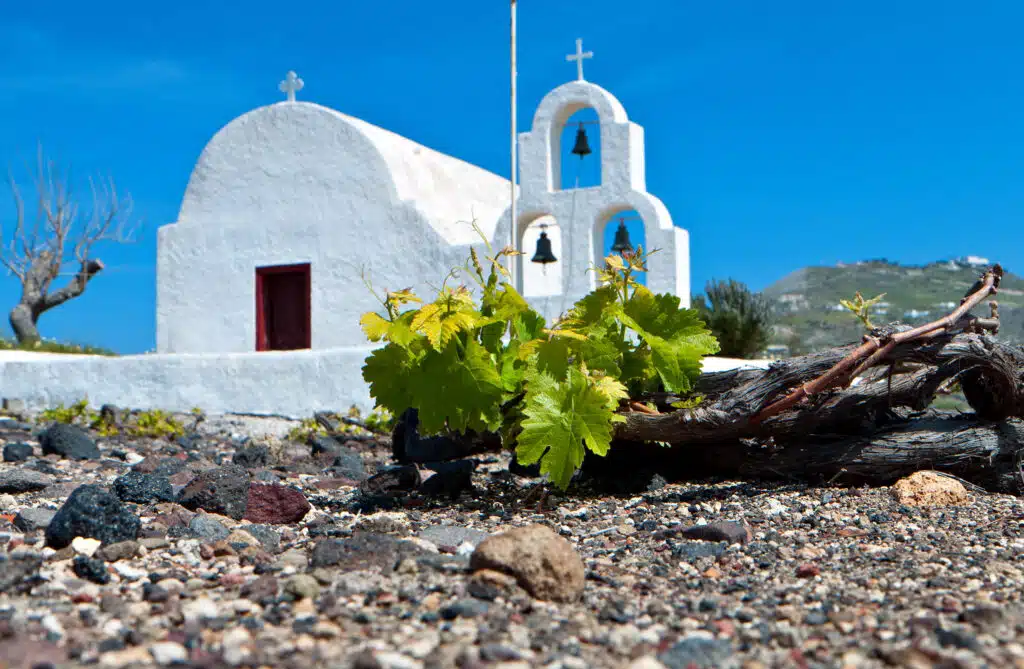
©santorinibesttours.com
Grapes, wine. And wine styles
Did you know that Santorini is most famously known for its indigenous white grape varieties, Assyrtiko, Athiri, and Aidani?
Assyrtiko is the island’s flagship grape. It’s a high-acid grape full of citrus and mineral nuances. You can drink it on its own or with grilled fish and meats.
Santorini classified wines: Santorini, Nykteri, and Vinsanto.
Santorini: This wine must contain 75% or more of the Assyrtiko grape variety, with the remaining 25% from Athiri and Aidani. The wine is generally unoaked, but some wineries make a small portion of oaked wine due to Assyrtiko’s versatility.
Nykteri: In Greek, the name means “working the night away,” It was traditionally harvested at night to avoid the hot temperatures and create a fine wine with little extraction from color and exposure to air.
Mezzo: It is a sweet wine made from the island’s white or red grapes and is similar to Vinsanto but means “less sweet.” The grapes are also sun-dried, but dry grapes must be added to the run-off juice from the raisined grapes before vinification.
Vinsanto
Vinsanto is an ancient winemaking tradition of Santorini that dates back thousands of years and represents an integral part of Santorini’s history.
For a wine to be labeled Vinsanto in Santorini, the wine must contain the Assyrtiko grape. The remaining includes Athiri, Aidani, and some small amounts of locally grown white sorts.
Furthermore, Vinsanto is known for its golden-orange to dark-amber coloring with a complex bouquet of dried apricots, golden raisins, and other dried fruits combined with sweet spice and an underlying minerality. Although classified as a dessert wine, you can enjoy it with various foods.
Note: Do not confuse Vinsatno with Vin Santo, the Italian “Holy Wine” used in the Catholic Eucharist.
In 2002, the EU determined that there was enough information to name Santorini, Greece, as Vinsanto’s place of origin, thus granting the island exclusive rights to use Vinsanto in its sweet wines.
Best Santorini wines
Below are tasting notes for different Santorini wines.
Note: On a subjective 100-point scale, these wines score from 95 to 98 points.
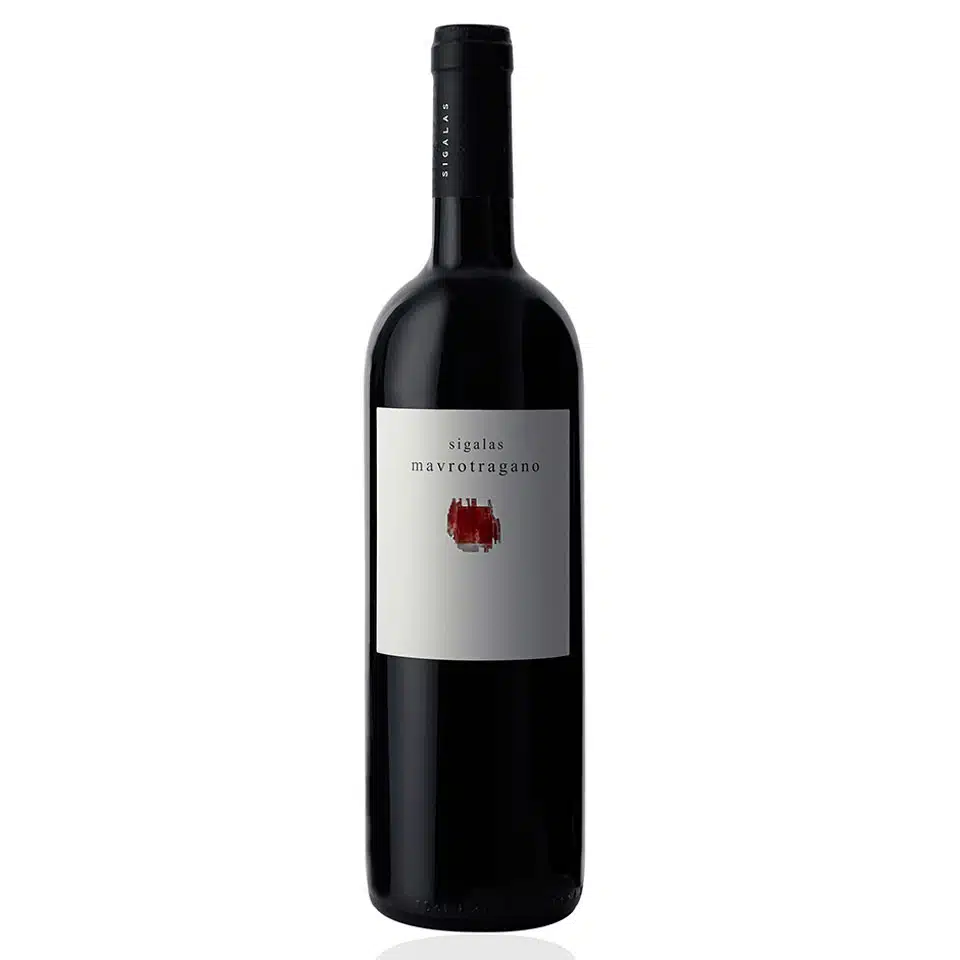
Domaine Sigalas. Mavrotragano. 2018 (red).
This wine is made 100% from the Mavrotragano grape. The taste consists of rich textured juice with maple syrup, cinnamon, and blueberries.

Estate Argyros. Cuvée Monsigniori. 2017 (white).
Made from 100-year-old Assyrtiko vines grown on two plots, this spends nine months on lees in stainless steel. It is a delicate merge of tropical fruit and salinity in this mouth. Beautifully balanced aromas include those of fresh bread, salt, and honey.
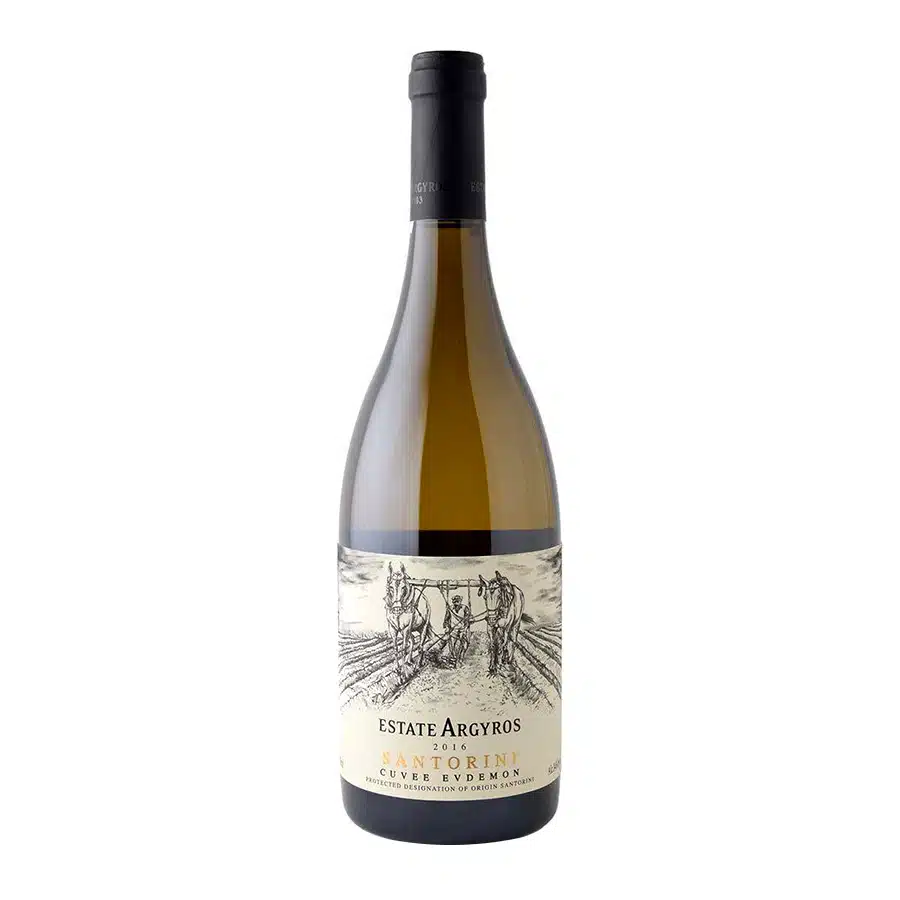
Estate Argyros. Cuvée Evdemon. 2017 (white).
The word ‘Evdemon ‘Means good spirit. This exceptional 100% Assyrtiko, made from 100 to 150-year-old grapes, comes from Pyrgos’ highlands.
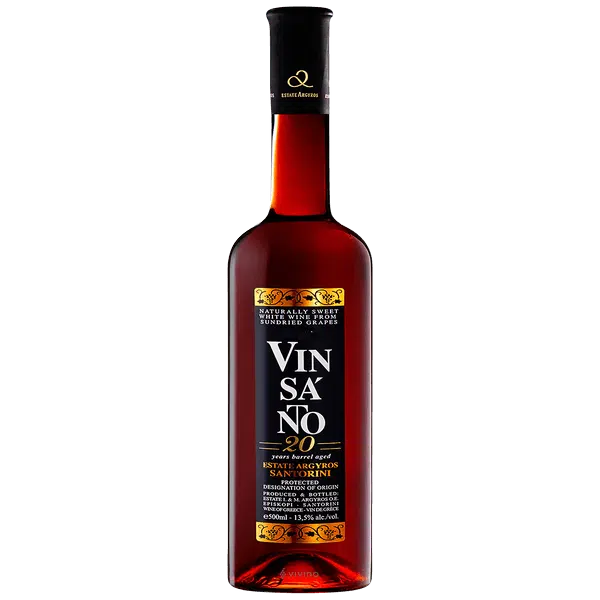
Argyros – Vinsanto 20 Years Barrel Aged
Vinsanto, made from white sundried grapes (80% Assyrtiko), has a deep amber color and flavors of butterscotch, roasted coffee beans, raisins, and cocoa. This wine is full-bodied with a beautiful balance of sweetness and acidity.
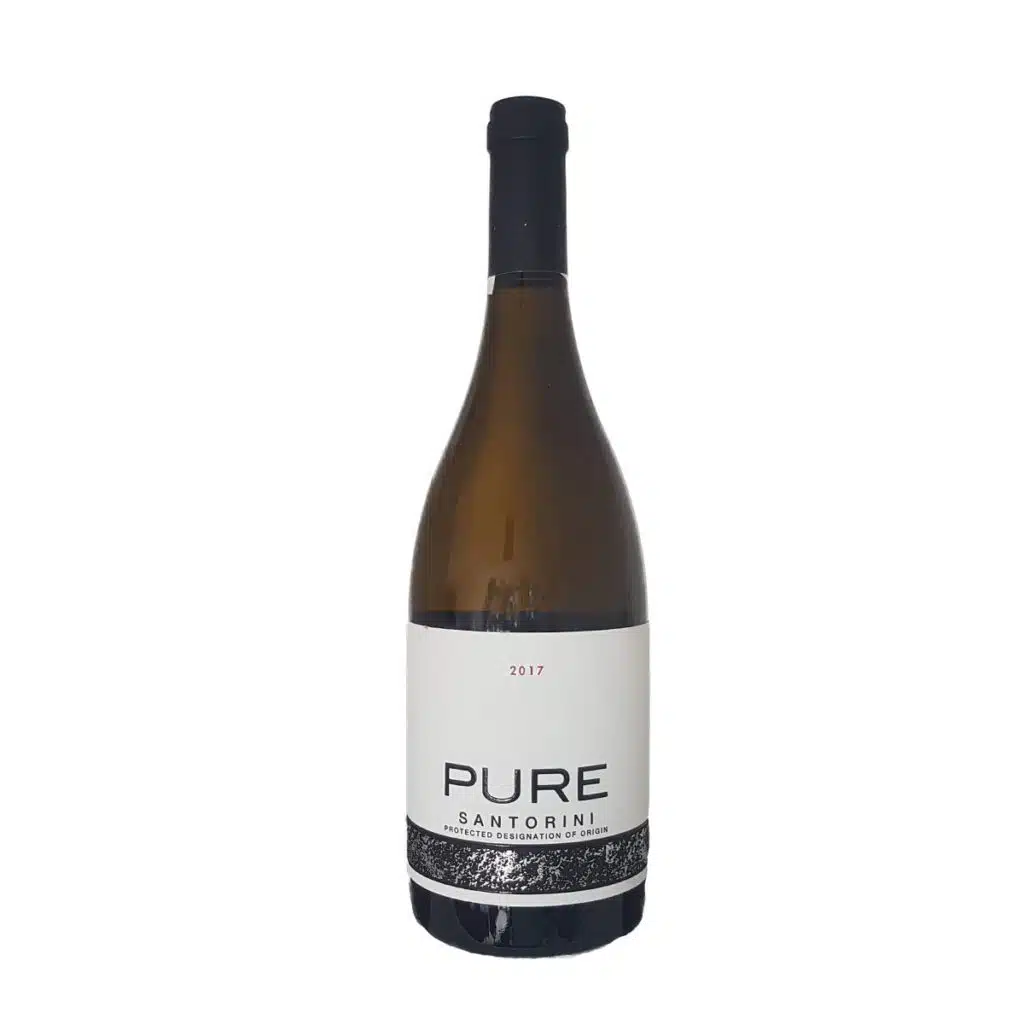
Pure Santorini wine
In the mouth, its structure is incredible. A rich body, sharp acidity, and tremendous concentration give balance lessons. Lemon peel, peach, unripe apricot, pear, honeycomb, lemon blossom, flint, smoke, and sourdough fill the mouth.
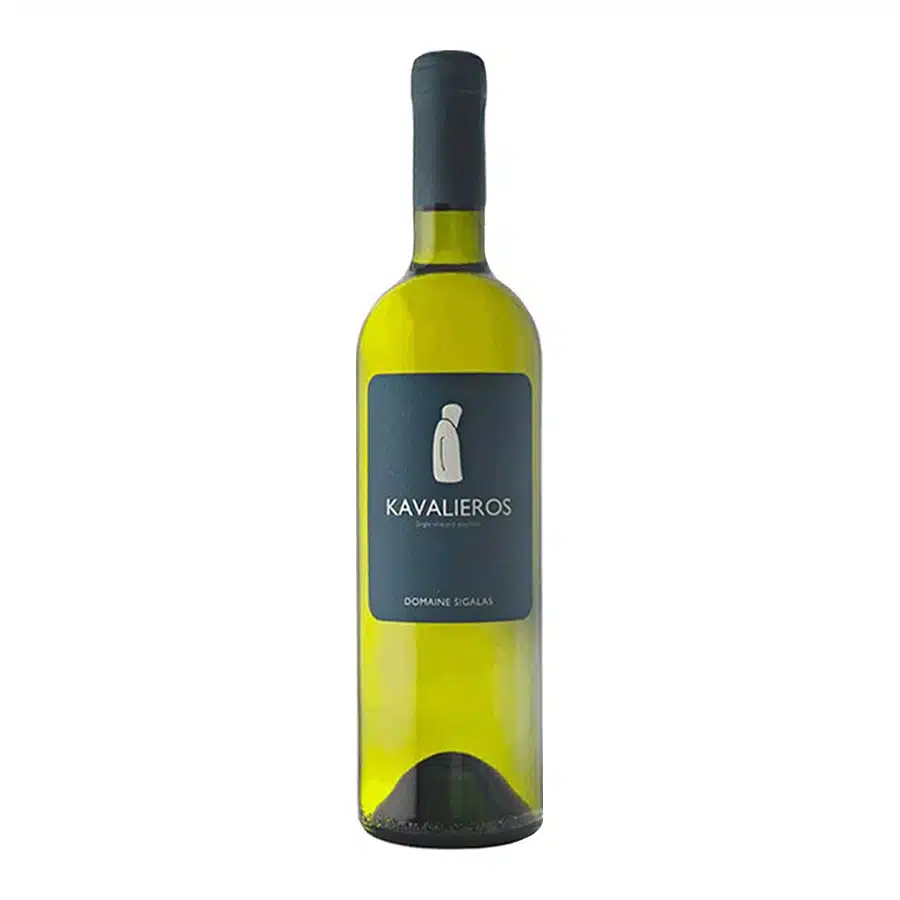
Domaine Sigalas Kavalieros
This wine is made from the indigenous Assyrtiko grape, grown in a single plot called Kavalieros in the village of Imerovigli. The climatic conditions of Santorini, particularly dry and characterized by the violent gusts of the Meltemi, have led, since ancient times, to cultivate the vine on the ground in tiny holes, wrapping the shoots on themselves to form a sort of circular basket.
Where to taste it?
Even though you will be tempted to stay at more famous villages, such as Oia and Fira, consider also staying at more traditional townlets, such as those located in the south of the island, which are pretty tranquil. The village of Megalochori—with banging church bells and quiet winding passages—includes the Alisachni Art & Wine Gallery. It offers outstanding dishes (consider prawns with ouzo or octopus with fava caramelized onions) and a list of numerous Santorini wines.
Or you can drive to Pyrgos, which has many nearby wineries (like Santos Wines). Or you can stop in one of its fabulous restaurants with incredible views and delicious food (like Agaze Bistro Restaurant Bottega).
Note: If you’d like to learn more about the island’s best wineries, we suggest reading the article about the finest wineries in Santorini.
Take a look at
References and sources:
Photo credits:
Featured photo ©grekaaddict.com

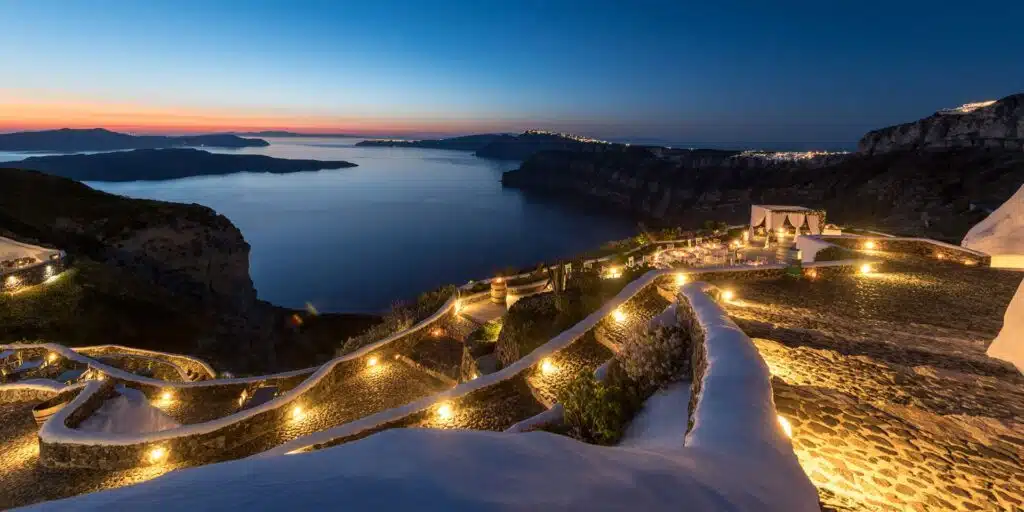

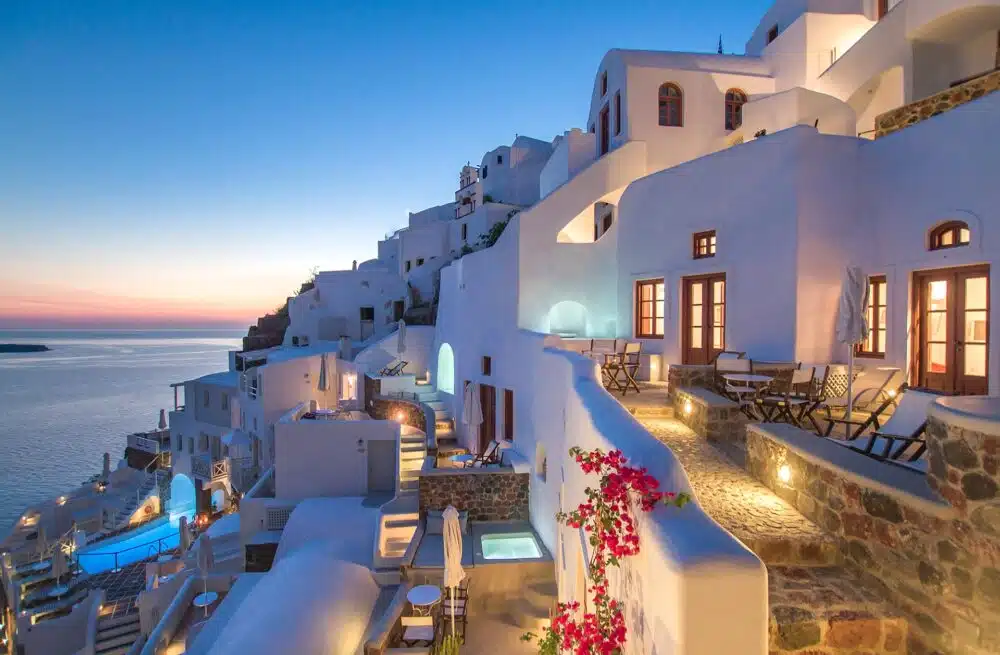

Pingback: The Finest Wineries in Santorini - Charming vibes 4u